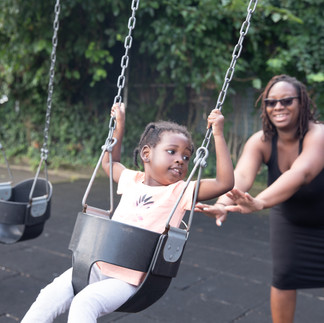Building Strength: Tips for Managing Hypermobility in Children
- Kathryn Robinson BSc (Hons) MCSP
- Sep 4, 2024
- 2 min read

For some children learning to walk takes a little bit longer than others, they fall more than their toddler friends and they sit and play in some really unusual positions, like ‘w’ sitting.
One of the most common causes can be children who are more bendy compared to other children and may be called flexible or hypermobile. This used to be known as ‘double jointed’ but is now classed as hypermobile and is where joints bend more than average. This is really common and affects about 30% of children.
For a very small number of people, it can cause symptoms which most commonly include delayed motor skills, frequent falls and bumps, getting extra tired and looking a bit uncoordinated.
For an even smaller small number of people, it can be part of a different condition that can affect other body systems including the digestive system, so it is always worth getting any worries checked out.
There is no cure for hypermobility, so the key is learning to manage any symptoms and get as strong as possible to support those bendy joints. Physiotherapists can work with children that are hypermobile to aid their development reaching milestones, help them improve their body awareness and proprioception (the sense that tells us where our body is in space). They can also give advice on helpful games, hobbies and sports to keep children strong and try to reduce falls.
A few ideas to work on getting stronger:
Make some creative obstacle courses inside or outside using any available furniture and equipment you can find – tables to crawl under, chairs to climb over, sofa cushions to balance on, bottles of water to weave in and out of
Try to get out for a walk every day on lots of different surfaces to challenge your balance. Try walking on the beach, at the park on grass, over forests climbing over logs and tree roots, and on shingle paths.
Have fun at the park. Encourage climbing, using the swing, trying out monkey bars and experiencing lots of different ways to move
Help out with physical jobs at home such as carrying and helping to put away shopping, gardening by sweeping up leaves, pegging out washing having to reach on tip toes and balance, and baking cakes working to stir the cake mix thoroughly.
Children can have one, a few or lots of bendy joints, they may be isolated to just the upper limbs or just the lower limbs. This means that no two bendy children are the same, some may have difficulty with using cutlery, doing buttons and hate craft activities. Others may be extra clumsy and always covered in bruises from falling over. Whatever the reason, the good news is that by working on strengthening the body through fun, play and targeted activities great results can be achieved.
Hypermobility is common in gymnasts, athletes, dancers, musicians and other high achieving individuals, so celebrate the benefits and you never know, you may have a potential Olympic medallist in your family.
Written by Kat Robinson, a highly specialised Paediatric Physiotherapist on TCT's Paediatric Physiotherapy Team. You can find more details about the services offered by the Physio team using the link below.






